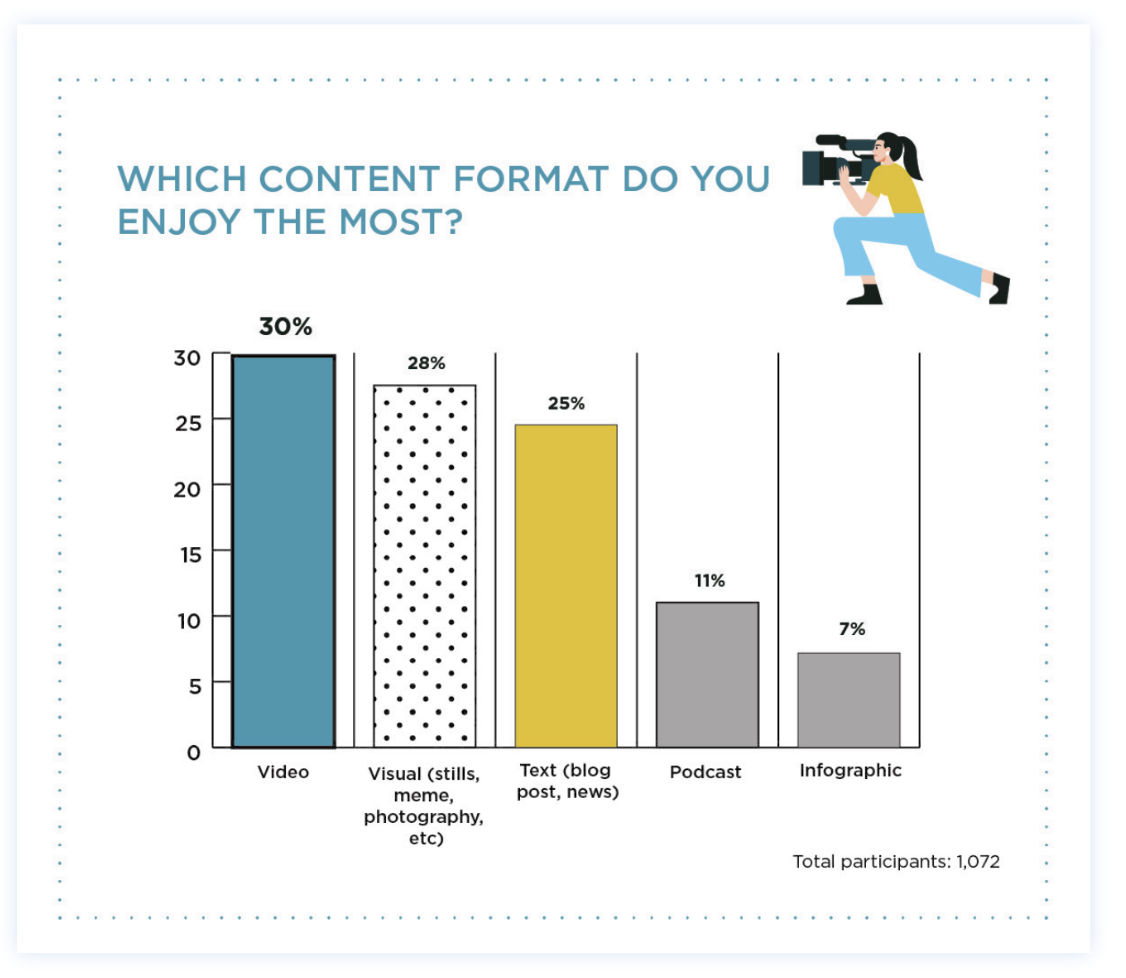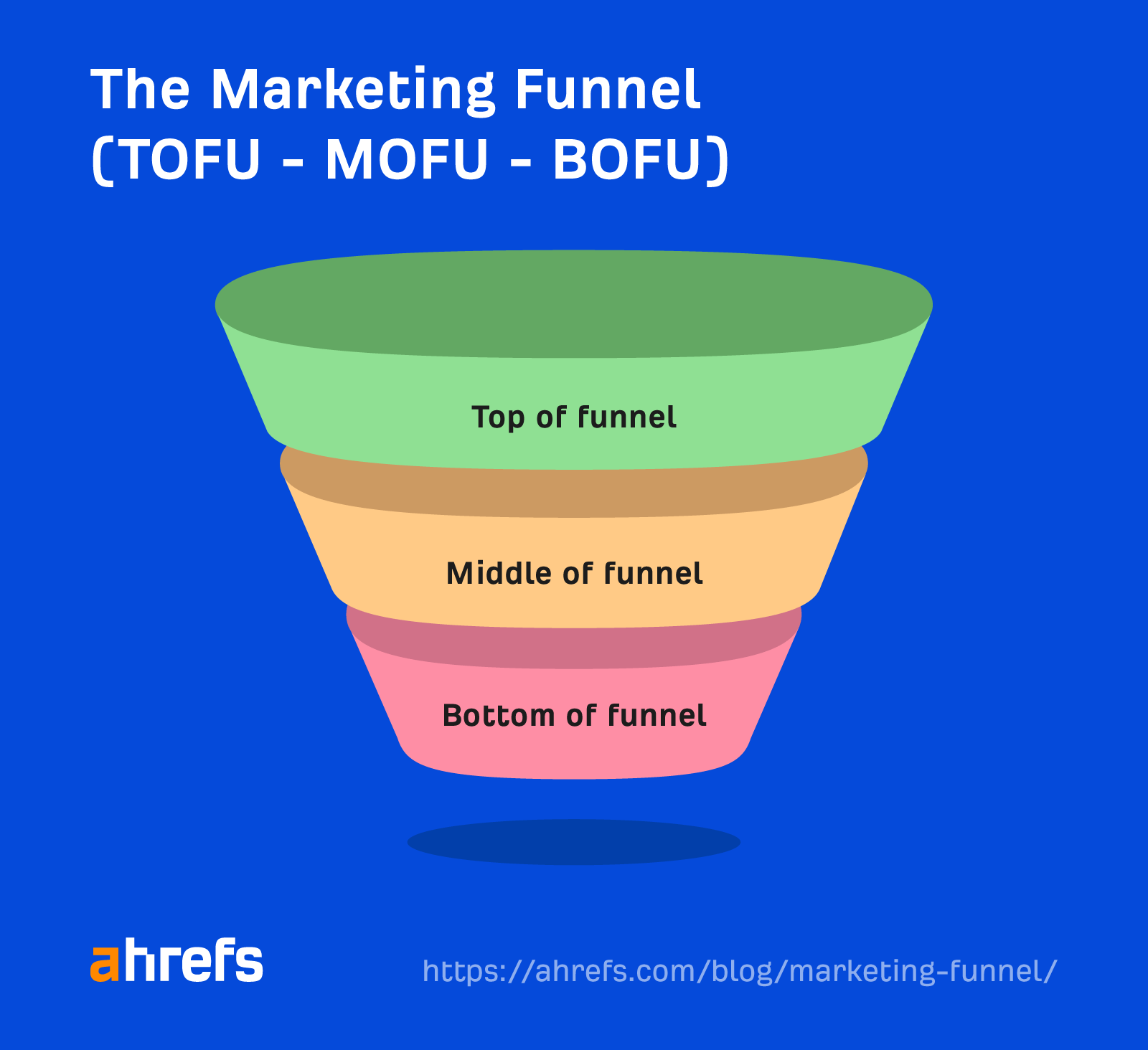Content Marketing
A Guide to Crafting the Perfect Content Format Mix for Audience Engagement
Content marketers today navigate a dynamic environment where the interplay of creativity and strategy profoundly shapes how brands engage with their audiences. Amidst this ever-shifting terrain, selecting the perfect content format mix has emerged as a distinctive challenge—especially as next-gen mediums enter the scene.
It goes beyond adapting to changing trends; it’s about crafting experiences that resonate with audiences across different channels. Let’s uncover strategies and insights that empower content marketers to create unified messages throughout the buyer journey.
Understanding the Content Format Landscape
The content marketing landscape is teeming with various content formats that serve as powerful tools for engaging audiences and achieving business goals.
These formats encompass a rich tapestry of mediums that cater to diverse audience preferences and consumption habits—each with its distinct advantages.
- Blog Posts: Blog posts are a timeless medium that continues to engage audiences through informative narratives and thought leadership while also boosting SEO rankings and brand awareness.
- Videos: Videos captivate audiences with dynamic visuals and auditory experiences, appealing to those who prefer immersive storytelling.
- Infographics: Infographics distill complex information into visually engaging snapshots, enhancing user understanding. Their visual appeal and shareability contribute to content dissemination.
- Podcasts: Giving on-the-go audiences easily accessible content, podcasts establish personal connections and thought leadership. Their convenience may align with your audience’s modern consumption habits.
- Webinars: Offering real-time interaction and knowledge-sharing, webinars facilitate engagement and demonstrate expertise. They are well-suited for showcasing complex subjects and customer wins.
- Guides and eBooks: These long-form, comprehensive resources offer an opportunity to showcase expertise, provide in-depth insights, and generate leads. They can be valuable assets for audience engagement and lead nurturing.
- Case Studies: Leveraging real-life examples of problem-solving and success, case studies establish trust and demonstrate tangible results, making them persuasive tools for converting potential customers.
- User-Generated Content: Harnessing the power of your audience, user-generated content enhances authenticity and builds social proof. Encouraging customers to share their experiences and stories can bolster brand loyalty and broaden reach.
- Newsletters: Regular email communications in the form of newsletters enable direct communication with subscribers, fostering relationships and providing valuable updates or content. Newsletters can be a vital touchpoint for maintaining customer engagement and driving conversions.
- Free Tools and Courses: Providing practical value to your audience through free tools, templates, calculators, and courses positions your brand as a helpful resource.
By employing a variety of content formats, content marketers ensure their messages are consistent across different channels, creating a unified story that appeals to a wide range of prospects and customers.
Tailoring Content Formats to the Funnel Stages
A successful content marketing strategy involves aligning content formats with the different stages of the customer journey.
By tailoring content to match visitor needs and preferences at each funnel stage, businesses can effectively guide them toward conversion. Here’s how:
Awareness Stage (TOFU): Engaging Top-of-Funnel Prospects
At the awareness stage, prospects are just discovering your brand and identifying their pain points. To capture their attention and provide value, focus on informative and easily digestible content:
- Informative Articles: Create blog posts and articles that address common pain points and provide educational or actionable insights. The key here is quality over quantity. These articles establish your brand as a trusted source of information and attract organic traffic from search engines.
- Engaging Videos: Craft short videos that introduce your brand, products, or services in an engaging and visually appealing manner. Videos can quickly capture attention and convey key messages effectively. Be sure to test different lengths or visual executions to see what gets the best results for your brand.Consideration Stage (MOFU): Deepening Audience Interest
As prospects move to the consideration stage, they evaluate their options and seek in-depth information. To deepen their interest, offer content that showcases your expertise and the value you provide, making sure to place the focus on the topic or customer—not your brand:
- Webinars: Host webinars on topics relevant to your industry or solutions. Webinars allow for interactive engagement, where you can address specific pain points and offer expert insights.
- Case Studies: Present real-life success stories and case studies that demonstrate how your products or services have solved similar challenges for others. Case studies provide social proof and build credibility.
- Podcasts: Offer podcast episodes that delve into industry trends, expert interviews, and deep insights.
Decision Stage (BOFU): Nudging Prospects Toward Conversion
At the decision stage, prospects are ready to make a purchase decision. Provide them with interactive content that assists in their final evaluation and nudges them toward conversion
- Interactive Quizzes: Create quizzes that help prospects identify their needs or challenges. Based on their responses, offer personalized solutions that showcase how your product or service can address their pain points.
- Product Demos: Offer interactive product demonstrations that showcase the features and benefits of your offering. Demos allow prospects to experience your solution firsthand and visualize its value.
By aligning your content formats with each funnel stage, you guide prospects through their journey, building trust, providing value, and addressing their needs at every touchpoint.
This strategic approach, coupled with Contently’s expertise and capabilities, not only optimizes engagement but also enhances the likelihood of conversion. Contently’s robust platform and freelance marketplace empower you to create diverse content formats that resonate with your audience at each stage of the buyer journey.
Bridging the B2B and B2C Content Divide
The distinction between B2B and B2C content strategies is pronounced, as each targets distinct audiences with varying preferences. Bridging this gap requires an understanding of the content formats that resonate in both realms and adapting strategies accordingly:
Examining Popular Content Formats in B2B Settings
In the B2B landscape, decision-making often hinges on in-depth information and value-driven solutions. Tailoring content to address these needs is critical:
- Whitepapers: B2B audiences seek authoritative insights. Whitepapers dive deep into industry trends, research, and analysis, offering valuable knowledge that positions your brand as an industry leader.
- Webinars: Interactive webinars provide an avenue for B2B audiences to engage with experts, ask questions, and gain insights.
- Case Studies: B2B buyers require evidence of real-world success. Case studies that showcase how your solutions have addressed challenges and yielded tangible results resonate strongly.
Differentiating B2C Content Format Preferences
In the B2C landscape, emotional connections and relatable content drive engagement. To reach B2C audiences effectively, leverage content formats that align with their preferences:
- Social Media: B2C audiences are highly active on social platforms. Engage them with visually appealing content, interactive posts, and compelling storytelling that sparks emotions.
- Video Content: Videos captivate B2C audiences, providing dynamic and immersive experiences. Short videos, vlogs, tutorials, and behind-the-scenes content resonate, fostering brand affinity.
- Influencer Collaborations: Collaborating with influencers allows B2C brands to tap into established communities. Influencers create authentic, relatable content that connects with their followers.
By strategically navigating the differences in B2B and B2C content format preferences, brands can create impactful content strategies that effectively engage audiences and bridge the gap between business and consumer realms
Maximizing Content Potential With Contently
Since content teams are often stretched thin—juggling various content formats, ensuring quality, and meeting tight deadlines—there’s a desperate need for an efficient solution that simplifies the content creation process. This is where a platform like Contently shines.
Contently offers a robust platform combined with a freelance marketplace that can help content teams maximize their potential:
- Simplify Management: With everything under one roof, from ideation to publication, Contently streamlines the content process, making it easier for teams to focus on crafting impactful stories.
- Diverse Talent Pool: Through Contently’s marketplace, brands can access a wide range of talented content creators. Whether you need a video script, an infographic, or a long-form article, there’s a specialist ready to help.
- Consistent Branding: With audience, tone, and voice prompts designed to ensure brand consistency across all content formats, Contently ensures your brand voice remains harmonious, regardless of the medium.
- Performance Analytics: Measure the impact of your content. Contently’s platform offers deep analytics that helps teams understand what’s generating ROI and where there’s room for improvement.
For content teams looking for a one-stop solution to navigate their ever-evolving content challenges, Contently provides an answer.
Crafting a Cohesive Content Strategy Across Formats
Embracing multiple content formats helps content marketers ensure their stories transcend the boundaries of individual channels, creating engagement that resonates with diverse audiences. From informative articles and captivating videos to interactive quizzes and comprehensive eBooks, each format adds its unique note to the overarching melody of a brand’s content strategy.
Elevate your content strategy with our curated insights. Subscribe to The Content Strategist newsletter and get your weekly dose of inspiration, directly to your email.
Image by treetyGet better at your job right now.
Read our monthly newsletter to master content marketing. It’s made for marketers, creators, and everyone in between.







